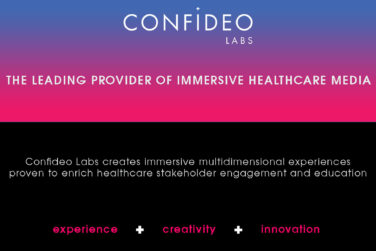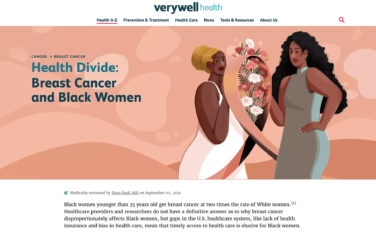PM360 asked industry experts what it takes to be a patient-first organization and how companies can better ensure they are delivering experiences that meet patients’ expectations. Specifically, we asked them:
- What is required today for life sciences companies to truly practice a patient-first approach? In what areas are companies still failing to live up to this promise? In what areas are they thriving?
- How can companies better track and measure patient experience to make faster iterative improvements that better meet patients’ needs and desires? What other strategies can companies use to ensure they offer next-gen experiences?
 Implementing a patient-first approach means first listening to patient communities, not just assuming we know how to help. Our most meaningful work comes when we spend time with our communities. Sponsoring an event and having a logo on a banner is great, but if you don’t bring your organization to the event—the art therapy program, the storytelling seminars, the walk—you’re missing out. Nothing is quite like sitting together with a family at a table after a walk or volunteering to work a registration table. Those interactions open conversations that provide an authentic connection and understanding for the disease experience and the passion of the community.
Implementing a patient-first approach means first listening to patient communities, not just assuming we know how to help. Our most meaningful work comes when we spend time with our communities. Sponsoring an event and having a logo on a banner is great, but if you don’t bring your organization to the event—the art therapy program, the storytelling seminars, the walk—you’re missing out. Nothing is quite like sitting together with a family at a table after a walk or volunteering to work a registration table. Those interactions open conversations that provide an authentic connection and understanding for the disease experience and the passion of the community.
At a recent event, the executive director of a rare disease non-profit compared their team to a cult, not in a negative way, but in the sense that they are all so committed that they couldn’t imagine doing anything else. The biotech industry needs to continue to make sure these advocates have the opportunity to partner with us and provide input at every step of the patient journey. This is an important time for patient advocacy and authentic engagement has proven to accelerate the speed by which we meet the needs of patient communities.
 When looking at our industry through a patient-first lens, the picture remains pixelated and cloudy. Expectations, business cases, and methodologies for acquiring patient insights and building partnerships are clearer, as is the recognition that patients are far more complex than their medical records.
When looking at our industry through a patient-first lens, the picture remains pixelated and cloudy. Expectations, business cases, and methodologies for acquiring patient insights and building partnerships are clearer, as is the recognition that patients are far more complex than their medical records.
Yet despite earnest efforts and meaningful progress, the “patient-first” concept still feels aspirational. Messaging about “patient centricity” remains pervasive and opaque. To me, “patient centricity” evokes an old-school market research lab where patients were asked to choose between options that often had little to do with what mattered most to them, while we watched behind two-way mirrors.
Instead of thinking about patients at the center, we benefit most when we make space for people with diverse lived experiences to be at the forefront of innovation. Whether it’s Patient-Focused Drug Development or requirements to use plain language, meaningful change has typically been led by patients and caregivers who have guided us—and the regulatory bodies that oversee us— toward what is most important to the people in need of scientific innovation. If improving and extending life is our industry’s raison d’être, then the needs and priorities of patients must be at the forefront.
 Life sciences are being driven to improve the patient experience and are increasingly accomplishing this through innovative programs and resources for patients and physicians that improve access to medications, help make prescriptions more affordable, and support patients with adherence. The ideal patient-first approach involves connecting the disparate parts of a patient’s disease journey. Manufacturers should strive to connect the patient experience from disease education, to support at the point of care, and following through in the patient’s daily life. Tailoring support to the patient’s disease stage is happening now, which is a win. However, support programs are disjointed and add work for the patient because they are siloed. Patient-first approaches entail manufacturers actively removing the burden of treatment by helping patients navigate their own health management.
Life sciences are being driven to improve the patient experience and are increasingly accomplishing this through innovative programs and resources for patients and physicians that improve access to medications, help make prescriptions more affordable, and support patients with adherence. The ideal patient-first approach involves connecting the disparate parts of a patient’s disease journey. Manufacturers should strive to connect the patient experience from disease education, to support at the point of care, and following through in the patient’s daily life. Tailoring support to the patient’s disease stage is happening now, which is a win. However, support programs are disjointed and add work for the patient because they are siloed. Patient-first approaches entail manufacturers actively removing the burden of treatment by helping patients navigate their own health management.
Technology is facilitating access for patients and extending the reach of support from the HCP’s office directly to the hands of the patients, helping them drive their own health journey. Effective programs use real-world evidence to help identify “at-risk” patients, and provide support at the moments patients most need it. Innovative applications of technology make the difference in driving the first fill, enabling medication persistence, and truly putting the patient first.
 To maximize the impact of patient engagement, support not only has to be personalized, but it must be dynamic, shaping itself to what is best suited for a specific patient. To do so, companies can tap into a host of different real-time, real-world data sources to guide how patient support evolves on an ongoing basis.
To maximize the impact of patient engagement, support not only has to be personalized, but it must be dynamic, shaping itself to what is best suited for a specific patient. To do so, companies can tap into a host of different real-time, real-world data sources to guide how patient support evolves on an ongoing basis.
For example, if the characteristics of the patient’s environment changes in a way that influences their adherence risk score, artificial intelligence can generate a recommendation to the patient’s nurse educator what they should communicate with that patient. The data being provided can inform automated, just-in-time interventions based on triggers such as declined shipments or opt-out from program services.
Another example is leveraging natural language processing of patient calls to measure sentiment and shift the type of support that is being provided. Programs with a mobile app maintain a feedback loop from patients by asking questions in the experience to then inform changes. Lastly, by accessing patient wearable data to learn about the passive moments in their day-to-day living, you can further individualize the experience and inform interventions, for example, among patients who have been less active than their baseline levels.
 In a question about next-gen ideas, it may sound counter-intuitive to say we need to take it back to basics…and talk with patients. But, that’s exactly what patient-centric companies do, utilizing available technology to make conversations easier, more collaborative, and more responsive. For example, we created a global Patient Focused Forum—a network of advocates and company representatives from around the world who share best practices. These colleagues infuse the patient voice into their processes at a country level, using technology to disseminate best practices and exchange ideas so everyone can learn from one another.
In a question about next-gen ideas, it may sound counter-intuitive to say we need to take it back to basics…and talk with patients. But, that’s exactly what patient-centric companies do, utilizing available technology to make conversations easier, more collaborative, and more responsive. For example, we created a global Patient Focused Forum—a network of advocates and company representatives from around the world who share best practices. These colleagues infuse the patient voice into their processes at a country level, using technology to disseminate best practices and exchange ideas so everyone can learn from one another.
To have compassion, we must understand our patients’ experiences, challenges, and perspectives. One way we have helped create this connection is through Patient Journey cards, each featuring a glimpse into a real patient story. We encourage employees to select a card each morning and keep it with them during the day as a reminder of the meaning of what we do. We also have a lunch-and-learn webinar series, called “In Their Shoes,” where patients are invited to share their stories with our U.S. team. The goal is to help employees bring that knowledge back into their work, be it in the lab or the boardroom.
 The patient’s day-to-day experience using a medicine and receiving relevant education and support for self-management is a critical and often overlooked indicator of real-world treatment success. Using novel methods to gain a deeper understanding of the many facets of a patient’s daily experiences can help identify valuable opportunities for improving education, self-management support, and treatment-related guidance.
The patient’s day-to-day experience using a medicine and receiving relevant education and support for self-management is a critical and often overlooked indicator of real-world treatment success. Using novel methods to gain a deeper understanding of the many facets of a patient’s daily experiences can help identify valuable opportunities for improving education, self-management support, and treatment-related guidance.
Through the use of brief psychometrically validated questions feasible for capturing day-to-day experiences via digital health apps, patient experiences can be collected continuously to generate actionable insights that can reveal fluctuations on a daily and weekly basis. This can include star ratings; feedback forms; single-item questionnaires; voice; photo and visual feedback; ecological momentary assessments; and creative, narrative, and free-text options. To guide fast service improvements, it’s particularly relevant to measure satisfaction; distress; convenience; emotional reactions of daily care; and barriers, hassles, and challenges related to management and side effects.
A patient-centric assessment strategy, guided by detailed patient journey mapping, can capture experiential info relevant to various patients’ touch points. This helps forge multistakeholder collaboration around the joint goal of improving the daily life, self-management, and the safety and efficacy of therapy.








